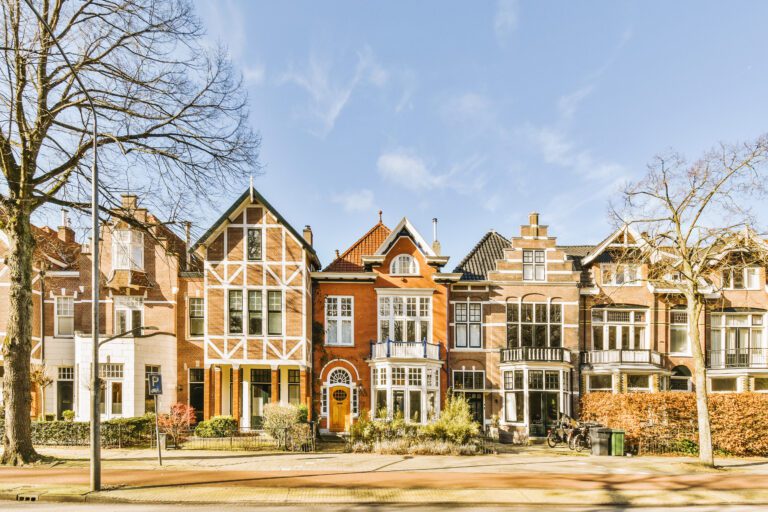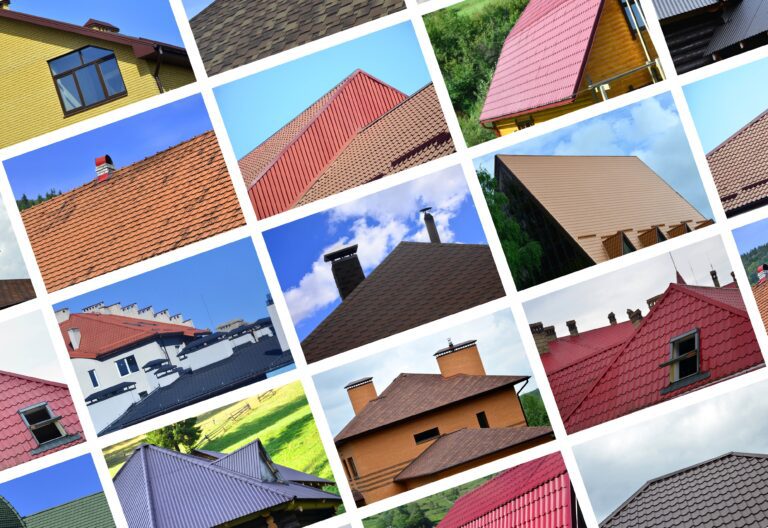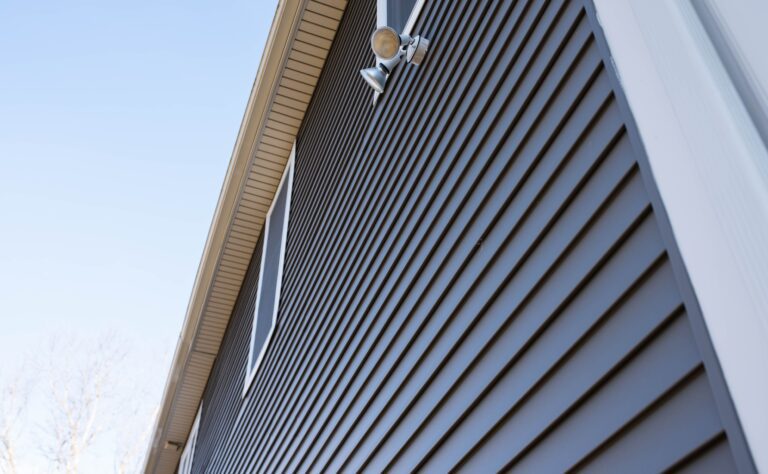Find the Perfect Exterior Colors for Your Home
The right color palette enhances your home’s architectural style, curb appeal, and resale value. Whether you prefer timeless neutrals, bold contrasts, or modern hues, choosing the right exterior colors can transform your home’s look.
Key Color Insights:
- Classic & Traditional – Colonial homes shine in whites, blues, and deep reds
- Modern & Minimalist – Sleek grays, blacks, and natural wood tones create bold statements
- Warm & Inviting – Earthy beiges, browns, and greens complement Craftsman and Farmhouse styles
- High-Contrast Drama – Dark siding with light trim adds depth and sophistication
See how different colors transform your home—Try Them in Our Visualizer instantly
Introduction
Standing at the edge of my driveway, I can’t help but feel a rush of excitement mixed with trepidation. Choosing exterior house paint colors isn’t just about picking hues; it’s about setting the stage for your home’s personality and curb appeal. Imagine driving up to your home every day, greeted by a color palette that feels like an embrace or exudes timeless elegance.
Whether you’re a homeowner looking to learn more about picking exterior house paint colors and color ideas, or a professional contractor or painter who is looking to improve their consultation strategy on exterior color schemes and paint colors, we have everything you need to know in order to perfectly pick paint colors for a home exterior.
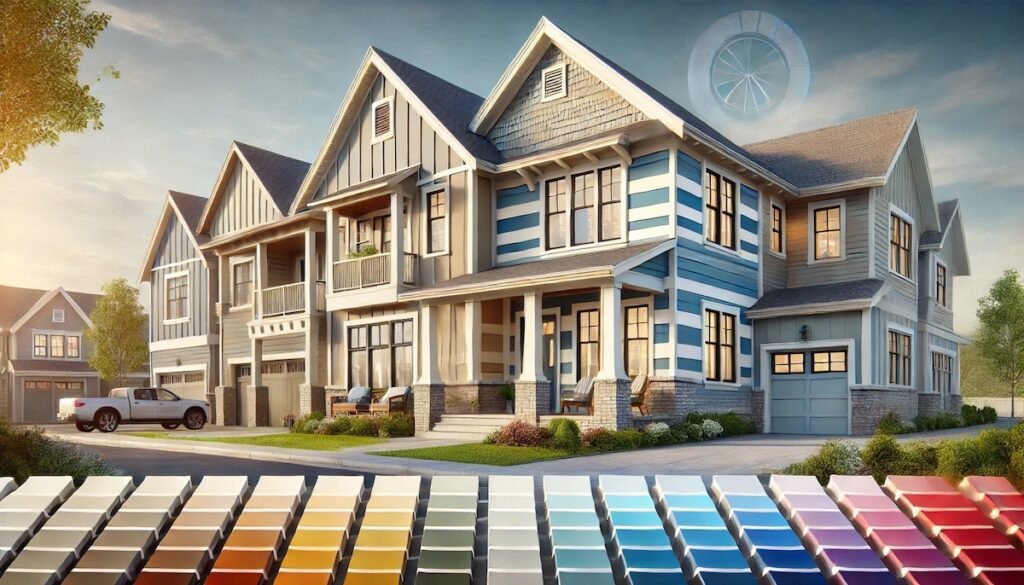
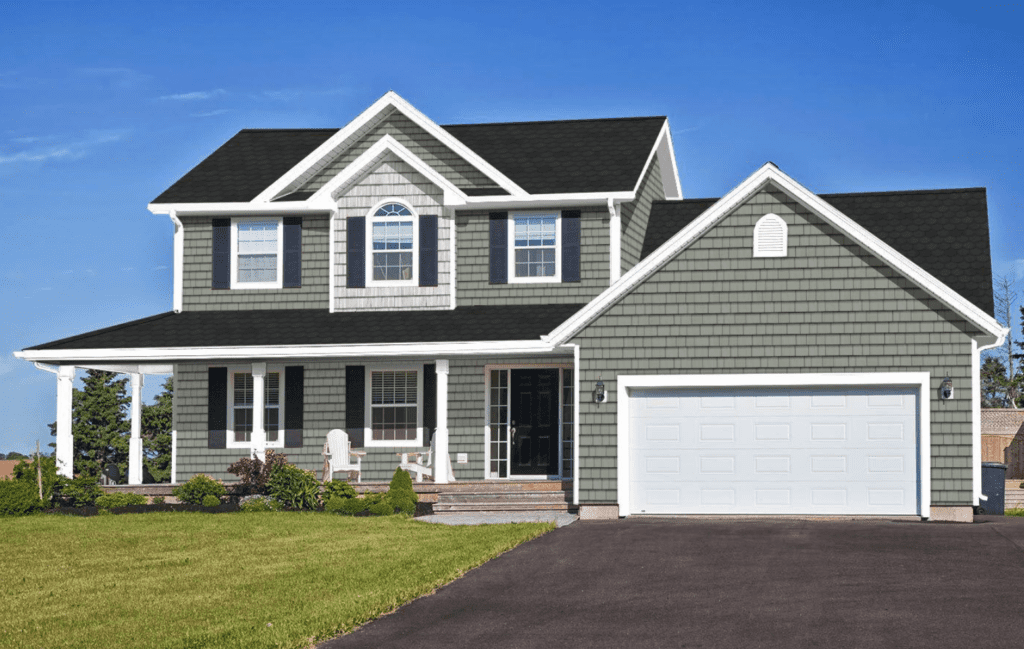
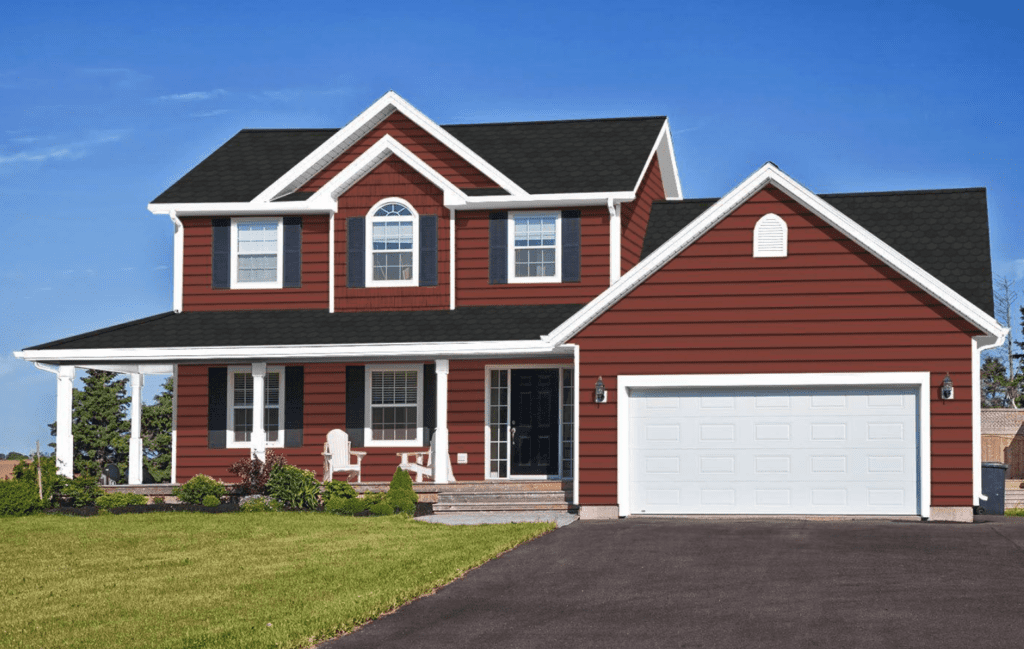
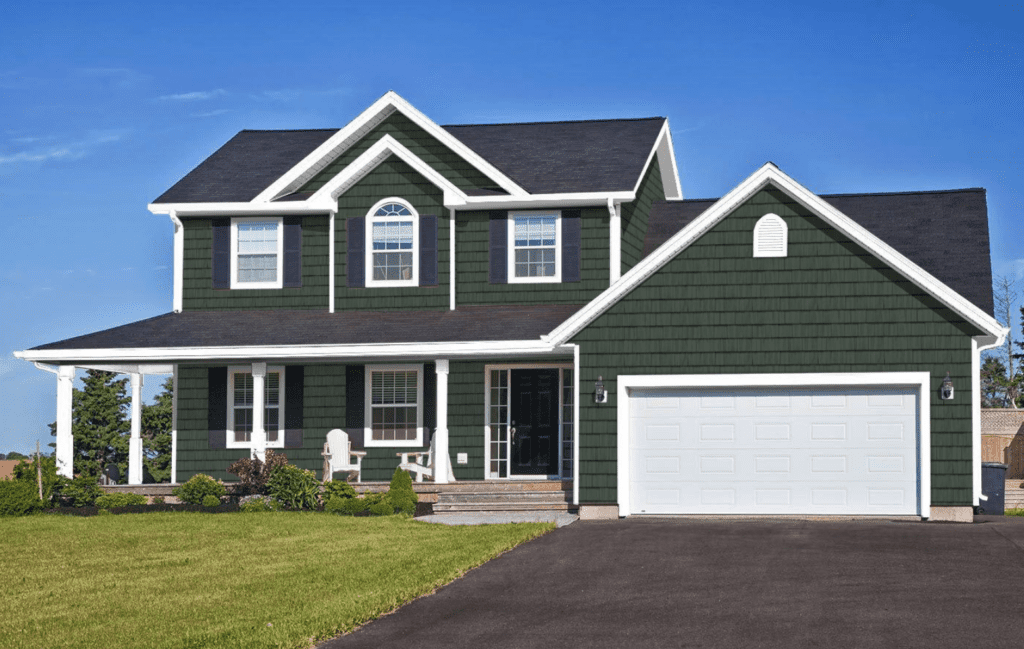
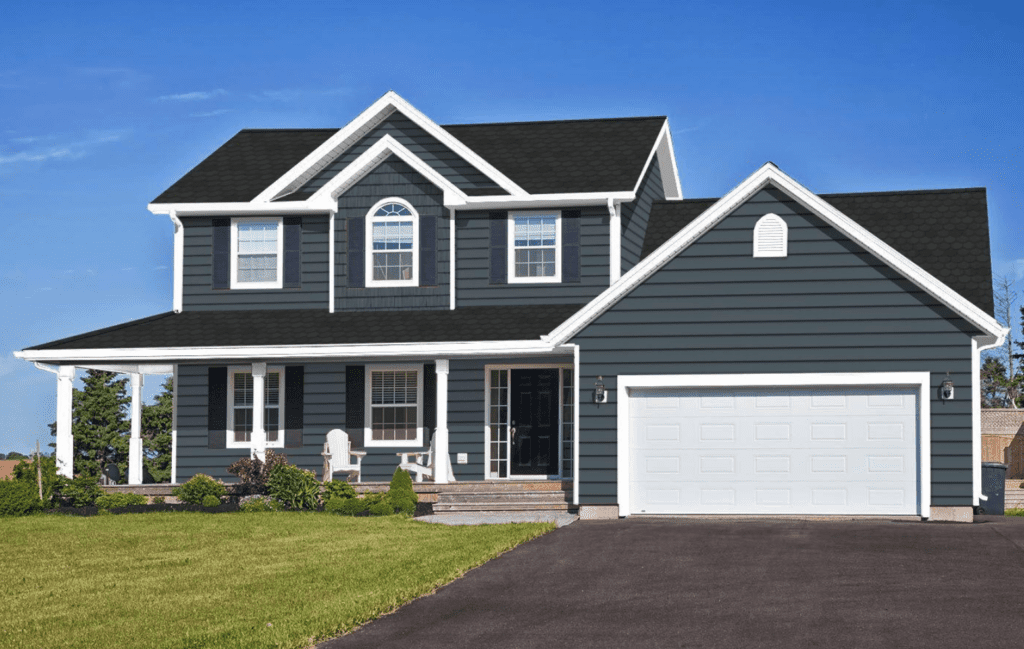
SIDING VISUALIZER TOOL
Design A Home In 5 Minutes
Help your homeowners visualize new siding and colors on their own home with Renoworks’ AI technology in seconds.
- Easy-to-use interface designed for contractors and professionals working with homeowners.
Understanding Exterior House Color
Choosing the right exterior house paint colors can make a big difference in your home’s overall look and feel. Here are some key considerations to keep in mind.
Importance of Exterior House Color
Exterior house color isn’t just about aesthetics; it sets the tone for your home’s personality and curb appeal. When I picked my first house exterior paint, I quickly realized how much a fresh coat could transform its appearance from drab to inviting. There’s also lots to consider between siding color, trim color, and front door color. How will you know the best paint for your home exterior? It also isn’t just about choosing any hue—it’s about finding one that resonates with me while fitting into the neighborhood vibe and color palette.
Factors Influencing House Color Choice
Architectural Style
Your home’s architectural style plays a huge role in determining suitable color palettes. Victorian homes often shine with vibrant, bold colors like deep reds or rich blues—colors that highlight their intricate details beautifully. On the other hand, modern residences usually benefit from neutral tones or monochromatic schemes such as shades of gray which emphasize clean lines and simplicity. Architectural details play a big part when thinking about home exterior colors that will enhance the appearance and not overwhelm the senses.
Landscape and Surroundings
The surrounding environment should also guide your choice of exterior paints. If you live among lush greenery or near water bodies, earthy tones like greens and browns might blend seamlessly with nature while still standing out nicely against it all! In contrast if you’re surrounded by urban settings lighter hues and shades may provide an appealing contrast without clashing too harshly against neighboring buildings’ facades.
Home Materials
It’s important not only considering what looks good but ensuring chosen color combinations complement existing materials on exteriors including the roof, house trim, window trim, siding color, red brick, the front door, etcetera creating cohesive harmonious appearances rather than jarring mismatches between different elements! Also, what looks good on a stucco home for example, might look quite different on a home with a different type of exterior.
Factors to Consider When Choosing Exterior Paint Color
Choosing the right exterior paint color can transform your home’s look and feel. It’s an exciting yet challenging task, as it involves several considerations.
Architectural Style and House Color
Your home’s architectural style is a significant factor when picking colors. Each style has its own set of hues that work best with it. Finding colors that accentuate the architectural details can transform the whole exterior. For instance:
Traditional Homes: Classic neutrals like beige, dark gray or white trim are perfect for traditional homes and contrast nicely with a red front door.
Modern Homes: Modern designs shine with these same classics but can also embrace bolder choices like Cyberspace which is a dark blue gray, or other shades of dark grays like Charcoal. A bright glossy red front door offers a stunning contrast. Black windows are also becoming very popular for modern homes.
Minimalist Architecture: Minimalist styles often benefit from clean lines and simple palettes; think whites, grays, or even dark blue shades.
- Victorian Architecture: In the Victorian era, this architectural style featured color palettes with deep colors like dark blue, greens, reds and yellows.
- Colonial Style Homes: Often these homes come with a brown roof and red brick which can sometimes be hard to match. You could paint the red brick (make sure you’re using the best paint for brick), to have it match any paint color palette, pair it with earthy tones to create a welcoming atmosphere, or go for a timeless look with a gray paint color and white trim.
- Mediterranean Style Homes: Darker tones for the trim color and shades lighter on the exterior create a contemporary look for this architectural style.
I remember choosing a soft light gray for the siding color of my modern house and white dove for the trim color —it felt timeless yet contemporary. It blended well without overwhelming other design elements and it allowed me to get creative with my front door.
Surroundings and Neighborhood Influences
Look around your neighborhood to get color ideas before deciding on color combinations:
The natural surroundings might suggest earthy undertones if you’re near woods or green spaces. Even better to go earthy if you have a brown roof. Accent colors like black windows also blend in nicely with natural surroundings.
Urban settings full of modern houses could inspire more industrial shades for your exterior color scheme—such as charcoals, blacks, crisp whites.
Nearby houses play into this too; you don’t want your color combinations to clash wildly (unless that’s the statement you’re going for). You’re usually safe to go shades lighter than the neighbours if you want to stay neutral.
When we moved and I picked out our house’s new shade in my new suburban community filled with beige tones—I opted for something slightly different—a muted blue gray—that stood out just enough while still fitting in harmoniously.
Popular Exterior Paint Color Palettes
Choosing the right exterior color scheme for your home’s exterior can be both exciting and daunting. With so many options available, it’s important to consider various factors before making a decision.
Overview of Popular Color Schemes
I’ve noticed that certain exterior house colors consistently stand out in neighborhoods. Paint color palettes that include white siding and black trim remain timeless, giving homes an elegant look that’s hard to beat. Another popular choice is shades of gray like light gray and dark gray paired with crisp white trim accents—this combination offers a modern house feel with a welcoming vibe while keeping your exterior neutral.
For those who don’t want to be neutral but love bold statements, a siding color of deep blues or greens combined with contrasting trim colors create striking visuals without overwhelming the senses. Black window trim can change the entire feel of your paint color palette. Earthy tones like beige and taupe also have their place; they blend seamlessly into natural surroundings or homes with existing red brick while still adding charm.
If you’re looking for the best exterior paint colors to provide an energetic, vibrant look that won’t overwhelm the senses choose one bright accent color (like orange, yellow, or turquoise and pair it with a cool color like a crisp white, dark blue or a shade of gray to create a visually striking paint color combination.
Gray paint colors are also very popular both on the inside and exterior whether it’s dark gray, blue gray or light gray or any other shade of gray you can’t go wrong pairing it with a classic white, especially if you have a bold front door color like a red front door.
Examples of Color Combinations
When I think about eye-catching combinations I’ve seen:
Navy Blue & White: Navy blue siding contrasted by bright white trim gives off coastal vibes perfect for beachside properties. But even if you don’t live on the coast, almost any home exterior looks good in shades of blue paired with white trim.
Charcoal Gray & Light Gray: Gray exteriors can be fun too! Using charcoal gray on main walls with lighter grays as accent colors creates depth without feeling too dark but can create a sophisticated or moody feel to the home.
Sage Green & Cream: Sage green exteriors paired beautifully with creamy white accent colors offer subtle elegance suitable even for traditional settings.
Beige & Earthy Browns: Beige is becoming the new gray as people are leaning more into exterior house colors that offer warm undertones and natural colors.
These examples show how varying shades and hues together on your home exterior for your siding color, house trim, window trim and front door achieve balance between uniqueness and harmony depending on preferences and architectural style of the home!
Aligning Color Choices with Existing Elements
It’s crucial not only to choose colors that complement each other but to match existing exterior elements such as roofing materials, window trim, the front door, siding color, red brick, accent trim, and landscaping features etcetera! For instance if red brick or stonework have warm undertones or if you have a brown roof, opt for warmer shades like beige and paint color palettes that enhance cohesion otherwise cool-toned selections like ice-y blues, whites and shades of gray might clash and disrupt the aesthetic flow altogether!
Consider how landscape elements: trees, shrubs, flowers, and seasonal variations affect appearance, and blending surroundings is essential to maintain balance and harmony. If nearby properties predominantly feature a similar architectural style, integrating comparable color combinations creates visual unity while avoiding a jarring effect of the house standing alone in the neighborhood.
Another thing to consider is if the neighboring homes are all within the same shade, you could stick with that paint color palette with a lighter shade to remain neutral, and add your own bit of personality by changing up the front door color.
Tips for Testing and Finalizing Paint Colors
Picking the right exterior house paint colors can be daunting, but it’s also an exciting opportunity to express your personal style. Let’s dive into some tips that’ll help you make the best paint choice and offer some color ideas.
Importance of Testing Paint Samples
Testing paint samples is a step you don’t want to skip. When I was choosing my home’s exterior color, painting large swatches on different walls helped me see how each shade of my favourite paint color palette looked under varying light conditions throughout the day. It also allows you to suss out different undertones. Gray paint colors or beiges for example often can have a hint of another color. And if you have red brick on your home, painting a swatch on the exterior next to it will help pull out any undertones or hues hidden within the red brick. Trust me—this small effort to find the right color combinations prevents costly mistakes later by ensuring you’re happy with your final selection.
Steps to Test Paint Colors
Paint Samples on the Wall: Always apply sample paints directly onto your home’s exterior rather than boards or paper sheets. The texture and material of your wall or trim affect how colors appear.
Use a Large Test Area: Pick substantial sections between windows or doors for testing; smaller patches might not give you a true feel for what entire exterior walls will look like.
Test Multiple Shades: Try several shades within your chosen color family so you have options when evaluating which looks best in natural lighting against other elements like trim, red brick, the front door and roofing materials.
Viewing Paint Colors in Different Lighting Conditions
Light changes everything! A color that seems perfect at noon may turn out differently during sunrise or sunset due to shifting shadows and angles of sunlight hitting it from various directions (I learned this firsthand). Spend time observing those test areas to detect any shifts in shade, hues or undertones that might change at multiple times over several days—you’ll notice subtle differences influenced by weather too! For instance, gray paint colors can vary widely. A light gray may actually be more of a blue gray or purple gray in certain lighting and a shade of charcoal gray may not be the kind of dark gray you were originally hoping for.
Professional Advice and Resources
Choosing exterior house paint colors can be daunting, but professional advice and resources make the process smoother.
Seeking Advice from Professionals
Consulting a color expert or an experienced painter is invaluable. When I picked my home’s exterior colors, talking to a pro gave me insights and color ideas I’d never considered. They suggested shades that matched my architectural style perfectly while complementing the surrounding landscape.
Professionals bring years of experience in dealing with various materials like wood, red brick, and stone. Their trained eye catches subtle undertones in paint samples that we might overlook. Plus they often have access to advanced tools like digital renderings which show how different shades and hues will look on your home to find the best exterior paint before you even open a paint can.
Another tip? Many local hardware stores offer free consultations with their in-house experts when purchasing paints there—definitely worth taking advantage of! What’s the best paint for you? Here are some of the best exterior paint brands:
Sherwin Williams: Known for durability across diverse climates; perfect if longevity’s key.
Behr: Behr paints offer excellent coverage requiring fewer coats saving both money & effort
Benjamin Moore: Praised highly due its rich pigmentation delivering vibrant long-lasting finishes.
Valspar: Great value offering wide range beautiful trendy modern palettes suitable variety styles tastes
Dunn-Edwards: Ideal those seeking eco-friendly options as products low VOC content making them safer environment health alike
Conclusion
Choosing the right exterior house paint colors can make a significant impact on your home’s curb appeal. By considering factors like architectural style, neighborhood influences, and existing elements you can choose color combinations that create a cohesive look and that enhance your property’s beauty. Don’t rush the process—test multiple shades, view them in different lighting conditions and seek professional advice if needed to get color ideas and to find the best paint and paint color palette for you. Investing time in this decision will ensure you’re satisfied with the results of your home exterior for years to come. With careful planning you’ll find that perfect color combination to elevate your home’s exterior charm and value.
Frequently Asked Questions
Why is choosing the right exterior house paint color important?
Selecting the correct exterior paint color enhances your home’s curb appeal, and harmonizing it with its architectural style and surroundings, makes it more attractive to potential buyers or visitors. Color combinations that look good on a Modern house might not look as good on a colonial style home with a brown roof for example.
What factors should I consider when selecting an exterior paint color?
Consider your home’s architectural style, architectural details, personal preferences, neighborhood influences, roofing materials, and landscaping features for a cohesive look that blends well with existing elements. You should also consider if you want your home to look bold or neutral and consider whether you can incorporate those colors into the siding color, front door color or trim of your home exterior.
Can you suggest some popular exterior paint color schemes?
Popular color combinations include white with black trim for classic elegance; shades of gray with white accents; deep or dark blue or greens paired with contrasting trims; and earthy undertones like beige and taupe, especially if you have a brown roof.
How do I test different colors on my house’s exterior effectively?
Test by applying large samples directly on the walls. Use multiple shades within the chosen family in various lighting conditions throughout the day to ensure satisfaction before finalizing your choice. Exterior house paint colors can vary widely in different lighting and may impact whether you keep the same color combination in shades lighter or darker, or if you try an entirely different color palette altogether.
Should I seek professional advice for choosing an external house color?
Yes, consulting a professional can provide valuable insights and offer color ideas. Experts offer advanced tools like digital renderings which help visualize how different colors, shades, and different color combinations will appear once applied.
Which are top recommended brands for the best exterior paint?
The best exterior house paint options come from top-rated brands known for durability and rich pigmentation including Sherwin Williams, Benjamin Moore, Behr (notably the Behr Premium Plus Ultra Exterior Paint & Primer in One™), Valspar Duramax®, Dunn-Edwards®, Farrow & Ball® Eco-Friendly Exterior Masonry Paints among others.
What are the most common exterior paint colors?
It depends on where you live, but in most of North America, the most common colors include bold and neutral colors such as any shade of gray, light gray, dark gray, charcoal gray or blue gray, as well as beige, charcoal, white dove, or dark blue. If you want to go bold but not over the top, changing the front door color is a fun and easy way to do that. Red front doors look great on modern and traditional style homes.




SIDING VISUALIZER TOOL
Design A Home In 5 Minutes
Help your homeowners visualize new siding and colors on their own home with Renoworks’ AI technology in seconds.
- Easy-to-use interface designed for contractors and professionals working with homeowners.
Related Articles
Continue exploring this topic with these related articles, or read one of our case studies to see how visualization has helped remodelers save time and increase their profits.


